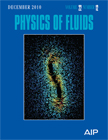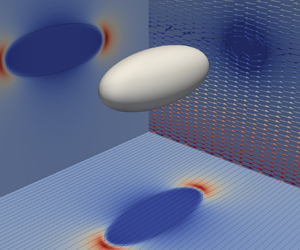A 3D numerical investigation on the magnetization of dilute magnetic emulsions subjected to shear flows and external magnetic fields is carried out. The present study is an extension of the previous work of Cunha et al. [“Effects of external magnetic fields on the rheology and magnetization of dilute emulsions of ferrofluid droplets in shear flows,” Phys. Fluids 32, 073306 (2020)] for the 2D analogous system. The ferrofluid is assumed superparamagnetic such as the bulk magnetization depends on droplet shape and orientation. The magnetic field is applied in the main flow, main velocity gradient, and main vorticity directions. For the two former cases, the emulsion magnetization does not perfectly align with the external field, such stronger shear rates leading to larger misalignment angles. For fields parallel with flow direction, stronger fields lead to a decrease in this misalignment angle, while for external magnetic fields in the main velocity gradient direction, stronger magnetic fields lead to an increase in misalignment angle. Although these results are qualitatively similar to those presented by Cunha et al. [“Effects of external magnetic fields on the rheology and magnetization of dilute emulsions of ferrofluid droplets in shear flows,” Phys. Fluids 32, 073306 (2020)], the misalignment angles observed are significantly smaller than those of the analogous 2D. The magnetic forces at the droplet interface create a magnetic torque in the emulsion, resulting in asymmetries of the bulk stress tensor. For external magnetic fields in the main velocity gradient direction, magnetic torques increase monotonically with increasing field intensities, while for external fields in the main velocity direction, magnetic torques are smaller and remain roughly constant for Camag > 8. We observed that the magnetic field applied in the main vorticity direction may lead to oblate droplets, rather than the more conventional prolate one

Energia Eólica, Hidro, Sistemas Térmicos
Professor Associado, Doutor


